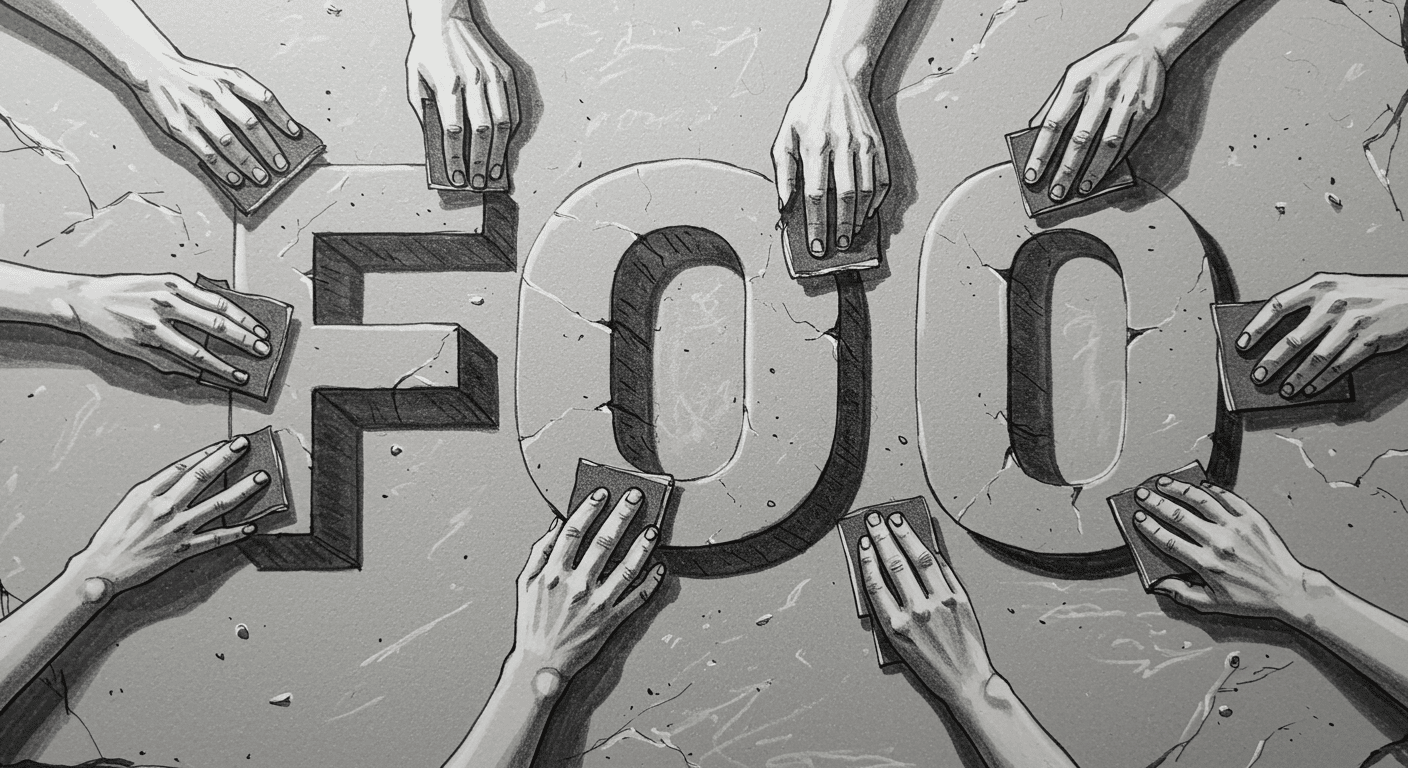There’s a reason your product copy reads like it was written by a sentient HR policy. It probably was.
Not literally. But by the time your crisp, punchy, human line made it through your product lead, your marketing head, your legal review, your VC’s opinion, and your cousin who “has a way with words,” it lost every bone in its body.
What started as:
“Delete forever”
…became:
“Permanently remove this item from your storage history (this action cannot be undone).”
And somehow, nobody in the room thought that was a problem.
Let’s talk about why that happens — and what it’s doing to your product.
1. Safety is killing clarity
The biggest crime in interface copy is the pursuit of safety over clarity. Everyone wants to sound “professional.” No one wants to offend. And that means your product ends up sounding like a chatbot intern who trained on corporate slide decks.
Real users don’t care if your modal is polite. They care if they understand what it does.
Here’s what we see:
| Intended | Watered-down Version |
|---|---|
| “Start trial” | “Activate limited-time promotional access” |
| “Change plan” | “Modify existing subscription preferences” |
| “Sign out” | “Log out of current session” |
| “Upgrade” | “Explore additional tiered options” |
Do any of those second options feel human? Memorable? Actionable?
Exactly.
2. Nobody is fighting for the voice
In small teams, UX copy often falls to whoever has a free hour and a passing familiarity with English. Or ChatGPT. In large teams, it gets passed between three departments and a product owner who says things like, “Let’s just make it sound neutral.”
Neutral is code for “nobody can agree.”
And when nobody owns the voice, the product starts to lose it.
3. Generic copy = generic experience
Every startup wants to sound bold. But boldness is a design decision — and copy is part of it. The moment you default to:
“We help companies unlock potential through scalable digital solutions…”
… you’ve erased everything that makes you interesting.
You might have:
- An opinionated product
- A weird onboarding
- A clever upsell moment
- A UI pattern your competitors are too scared to try
But none of that matters if the copy reads like oatmeal.
4. What brutal honesty actually looks like
Let’s take a few examples from our recent teardown notes. These are real before–afters (sanitised, obviously):
Modal Button
Before: “Proceed to configuration”
After: “Set it up”
Empty State
Before: “No current items have been selected in your workspace.”
After: “Looks empty in here. Time to add something.”
Form Error Message
Before: “An error occurred while processing your request.”
After: “Hmm. That didn’t work. Try again in a second.”
Clear doesn’t mean casual. Friendly doesn’t mean flippant.
But if your UI can’t sound like a real person, don’t be shocked when your users start behaving like robots.
5. Want to test this? Try the “Real Human Rewrite”
Here’s a quick trick. For every bit of UI copy, ask yourself:
How would I say this to a user over Zoom?
If your current copy sounds wildly different from the answer — you’ve got a tone problem. Or try this:
- Take a screen.
- Strip the logos.
- Read only the copy.
- Could this belong to any other product in your category?
If yes, start again.
6. Good copy doesn’t just “sound nice” — it drives action
Product heads often think copy is lipstick. Something you brush on after the wireframes are done.
But good microcopy increases conversions.
- It reduces support tickets.
- It builds trust.
- It gives your brand a spine.
Bad microcopy does the opposite.
- It confuses,
- stalls,
- repels.
Even if the UI is pixel-perfect.
Final thought: Design isn’t just what it looks like
It’s what it says. What it promises. What it dares to say clearly.
And if you’re a founder or product lead who’s tired of your product sounding like a warning label, it’s time for a rethink.
Your product isn’t a policy doc. It’s a conversation.
Let’s help you write like it.
Need help fixing this kind of problem?
Check out our Product Design services — or learn what DNSK’s all about.
